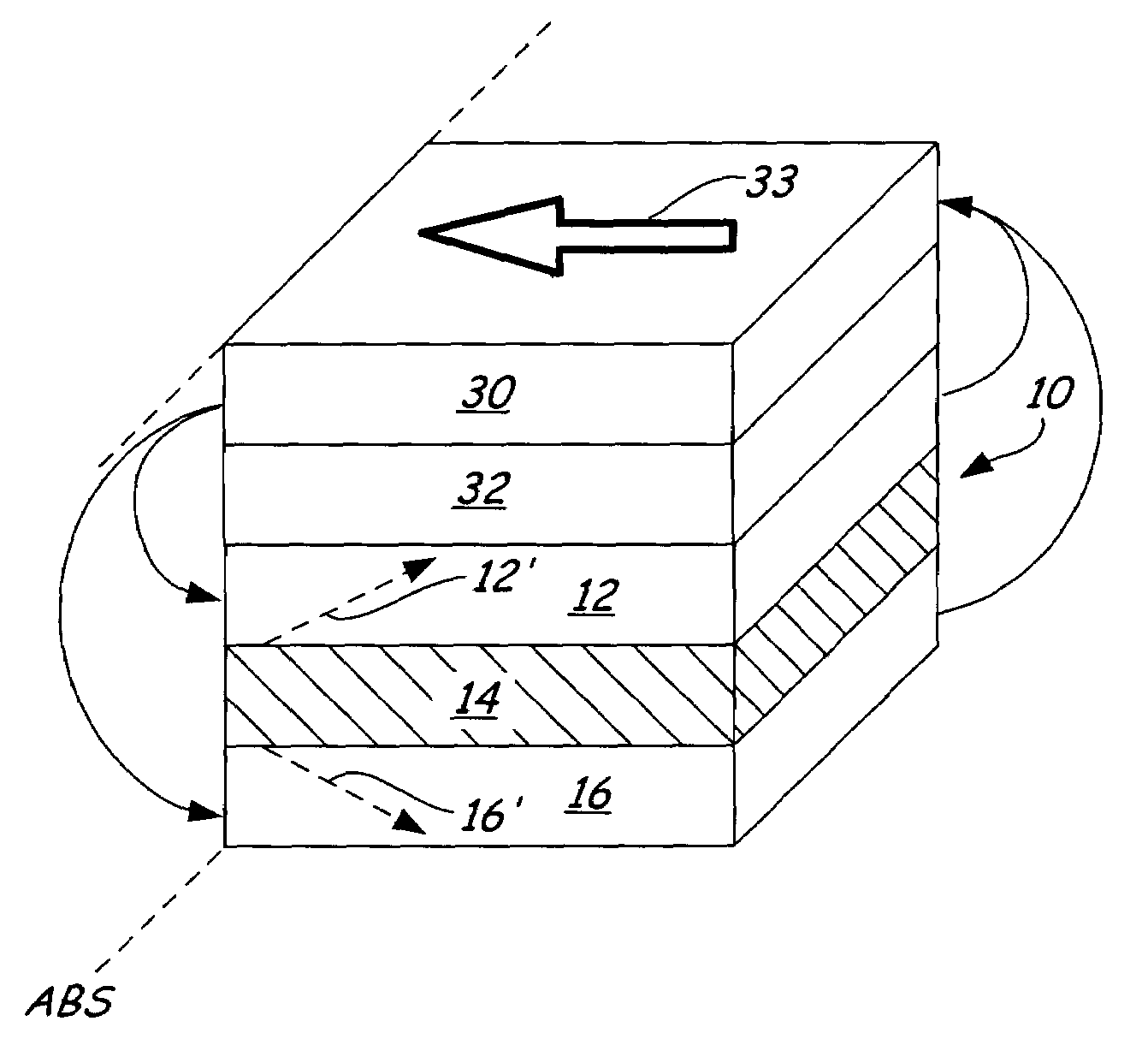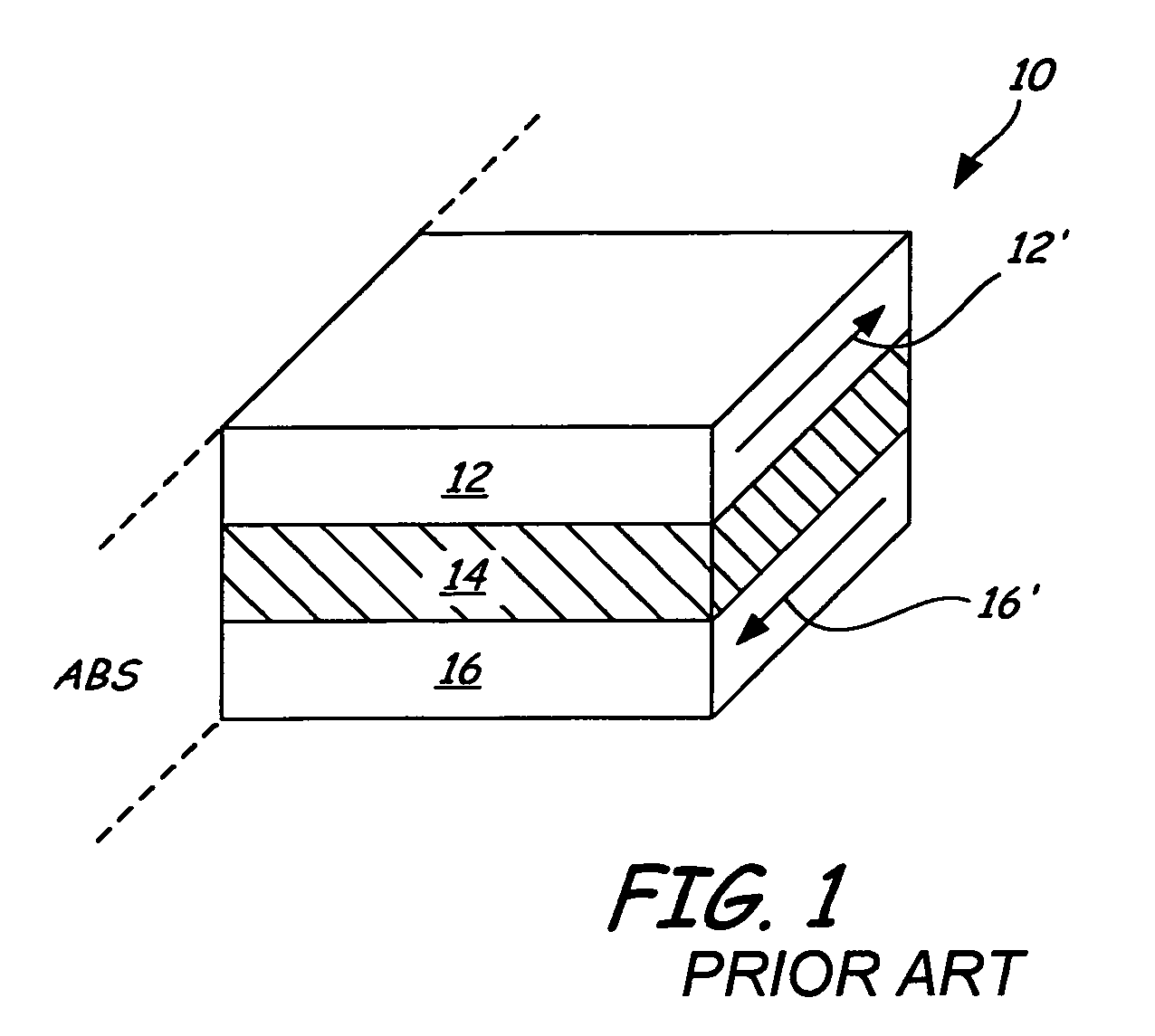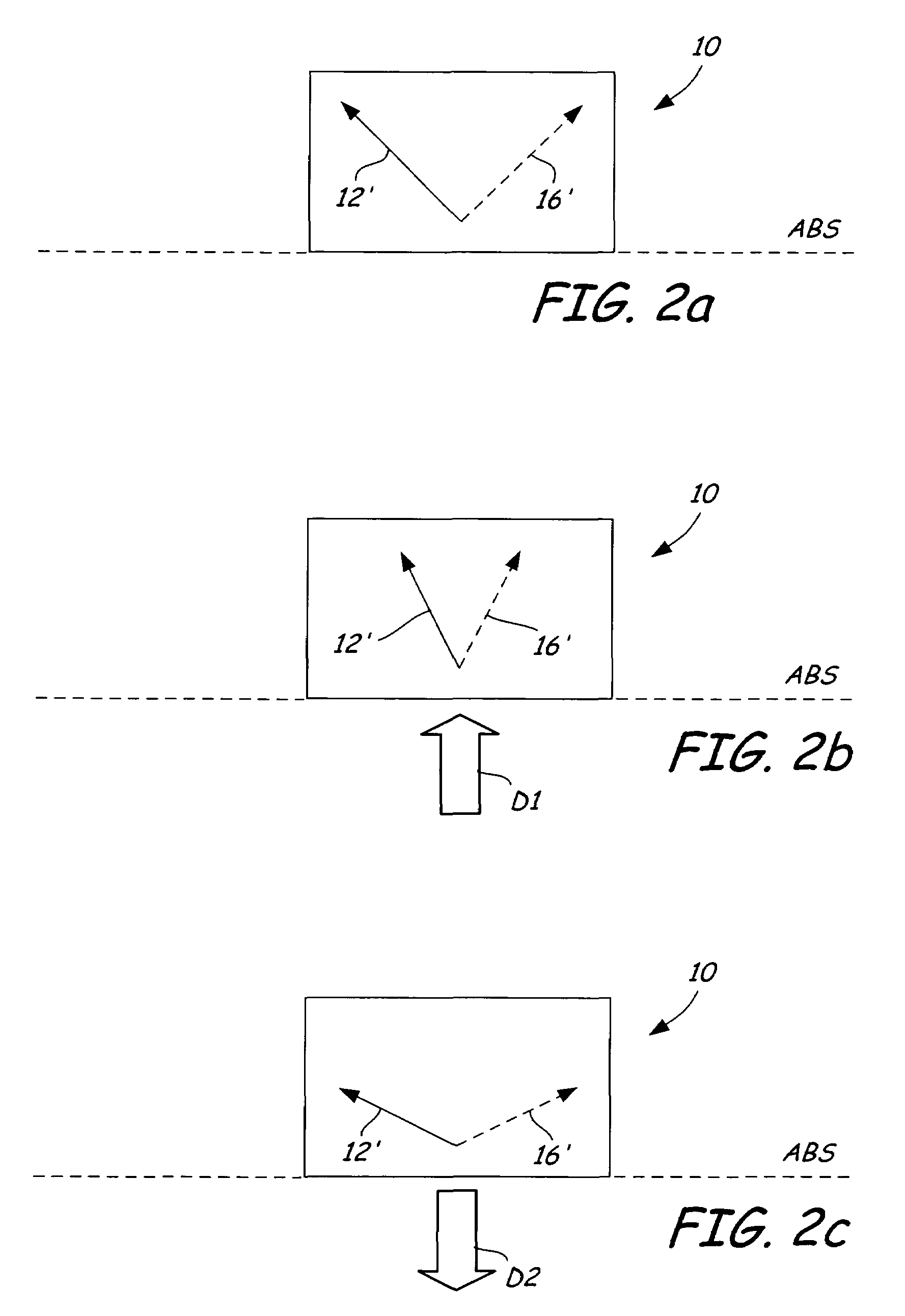Biasing for tri-layer magnetoresistive sensors
a tri-layer magnetoresistive sensor and biasing technology, applied in the field of magnetic data storage and retrieval systems, can solve the problem that the sensor has the potential to exhibit an undesirable magnetic response to applied magnetic disc fields
- Summary
- Abstract
- Description
- Claims
- Application Information
AI Technical Summary
Benefits of technology
Problems solved by technology
Method used
Image
Examples
Embodiment Construction
[0021]FIG. 1 shows a perspective view of tri-layer reader stack 10 in a quiescent / unbiased state. Tri-layer reader stack 10 includes first free layer 12, magnetoresistive / spacer layer 14, and second free layer 16. Magnetoresistive / spacer layer 14 is positioned between first free layer 12 and second free layer 16. Free layers 12 and 16 are preferably made of a ferromagnetic material. Magnetoresistive / spacer layer 14 may be either a tunnel barrier (to produce a tunneling magnetoresistive, or TMR, effect) or a nonmagnetic conducting spacer (to produce a giant magnetoresistive, or GMR, effect). The quiescent state / unbiased magnetization directions of free layers 12 and 16 are denoted by the arrows 12′ and 16′, respectively, on each of the free layers.
[0022]First free layer 12 and second free layer 16 have shape anisotropy induced magnetization directions. That is, the easy axes of magnetization of first free layer 12 and second free layer 16 in a quiescent / unbiased state point in a dire...
PUM
| Property | Measurement | Unit |
|---|---|---|
| magnetoresistive | aaaaa | aaaaa |
| magnetization | aaaaa | aaaaa |
| nonmagnetic | aaaaa | aaaaa |
Abstract
Description
Claims
Application Information
 Login to View More
Login to View More - R&D
- Intellectual Property
- Life Sciences
- Materials
- Tech Scout
- Unparalleled Data Quality
- Higher Quality Content
- 60% Fewer Hallucinations
Browse by: Latest US Patents, China's latest patents, Technical Efficacy Thesaurus, Application Domain, Technology Topic, Popular Technical Reports.
© 2025 PatSnap. All rights reserved.Legal|Privacy policy|Modern Slavery Act Transparency Statement|Sitemap|About US| Contact US: help@patsnap.com



